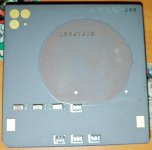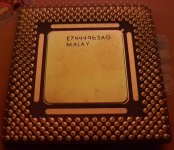The heatsink is epoxied to the CPU, so yes it's extremely difficult to remove. But it's worse than that, the heat from the CPU tends to bake the epoxy and make it even harder. I've had to remove a fair few epoxied CPU/GPU heatsinks over the years, it's a PITA.
I wouldn't toss it though because the 200 MHz overdrive is one of the rarer and more expensive overdrive parts. You might be able to get a slower overdrive and cannibalize the VRM and heatsink off of it to make that one work. And if you wanted to go the extra mile, you could reverse engineer the VRM board and make a replica so both could work. The heatsink would be a bit of a challenge though. I think a chipset heatsink might work with it, since they sometimes come with round bases.





